
It's not every day that Disney makes a billion dollar mistake.
Yet, that's what happened when Disney's California Adventure opened in 2001. Word quickly spread that the new second gate at the expanded Disneyland Resort wasn't exactly a fitting companion to Walt's original Magic Kingdom. And unfortunately for Disney executives, it wasn't just that California Adventure lacked Disney characters and attractions for families; it wasn't just that the park was underfunded and underbuilt, severely lacking E-Ticket draws; it wasn't just that the park was creatively starved from the start...
California Adventure's problems ran deeper, tied to its very core concept. And that's where our story began in Declassified Disaster: Disney's California Adventure – Part I – one of Theme Park Tourist's most-read industry insider stories, walking through the park's underbuilt original form... a great place to start if you haven't yet. Because that's where our tale today begins: five years and nearly a billion-and-a-half dollars later, Disney California Adventure re-emerged in 2012 with a brand new story and heart...
Image: Disney
Yet the on-going saga of Disney's California "Misadventure" may not be over... Which is why today, we'll extend that Declassified Disaster entry with a "Part II," following the park's tumultuous timeline from its 2012 re-opening to today to explore the idea that the lessons Disney learned just a decade ago may not have stuck. Is Disney re-making mistakes of the past with its recent re-direction for California Adventure? Settle in for another California mis-adventure as we step into the reborn park and examine some curious changes in the less-than-a-decade since.
From the ashes
When Disney's California Adventure opened in February 2001, executives and designers believed that it would change everything about Disney Parks. After all, California Adventure was the final piece of the puzzle that would turn Walt's original theme park in Anaheim into just one piece of the new Disneyland Resort – a multi-day destination for visitors the world over, just like the younger Walt Disney World in Florida. Rising on the land that had been Disneyland's own parking lot for 45 years, California Adventure wouldn't be a complement to that "tired, boring, old-fashioned" original – it would be the opposite.
Disneyland's themed lands are cinematic, historic, immersive worlds born of American pop culture and passed through a lens of fantasy. Built by filmmakers, these lands felt real and habitable and historic, and yet impossible – not tied to any one place on a map. Instead, each represents a time and place "that never was, but always will be," shaped by own our collective consciousness of what adventure, frontier, fantasy, and the future look like. And since its opening in 1955, Disneyland's guests have been awed by the park's power to help them "leave today and enter the worlds of yesterday, tomorrow, and fantasy."
Image: Disney
California Adventure's concept was... a little different. Intentionally designed to be hip, edgy, cool, and brass, the park's four "districts" weren't so concerned with things like nostalgia, history, idealism, or heart. The time? Now. The place? Here! California Adventure was filled with spoofs of modern California played out on a massive scale.
And that's where our story began. In Part I of the park's story, we dove into the making of Disney's California Adventure and the perils and pitfalls of Disney's biggest mistake ever. We took a walk through this costly theme park failure in Declassified Disaster: Disney's California Adventure – Part I, so be sure to start there to see why California Adventure was built, what guests found when they stepped inside back in its early years, and why they didn't come back... But here's the short version:
Whereas Disneyland's opening act is the warm, glowing, historic, and nostalgic Main Street, U.S.A., California Adventure is a post-modern park with a postcard entry, leading guests to the stark, saturated, concrete Sunshine Plaza of corrugated steel walls, Beach Boys music, cartoon proportions, and the uninspiring brass Sun Icon that just didn't quite look or feel like a fitting counterpart to Sleeping Beauty Castle.
Image: Disney
A land dedicated to Hollywood's Golden Age is a no-brainer in a park themed to California, right? Who but Disney could transport guests to the heyday of Tinseltown, into the glitz and glamour of the movie capitol of the world? And while California Adventure does have a land dedicated to Hollywood, it's Hollywood Pictures Backlot. So while it might look like you're stepping down a modern Hollywood Blvd., don't be fooled! You're on a Hollywood set... of Hollywood! Get it?
Next, The Golden State is the park's catch-all district with sub-areas dedicated to California's "other" regions – the High Sierras, Pacific wharfs, San Franscisco, Napa Valley, the San Fernando Valley, and arid high deserts. That's saying something considering this district contained only two rides, otherwise populated entirely by restaurants, shops, wineries, walkthrough exhibits, and a sit-in tractor listed as an attraction.
Image: Disney
Finally, Paradise Pier was a problem. Not only because it almost exclusively contained "off-the-shelf" carnival rides, completely lacked Disney characters, and accurately represented a modern boardwalk of stucco, neon signs, and circus freak posters... but also because Walt Disney specifically designed Disneyland as an alternative to the dirty, loud, brash carnival piers he visited with his daughters when they were young...! Oops...
From the dismal opening day of Disney's California Adventure, it became clear that the new park meant to turn Disneyland into a destination might instead sink the whole resort. Early word of mouth spread, and during California Adventure's first year – when excitement should've been at its highest – only 40% of those who visited Disneyland bothered to check out California Adventure, too.
Image: Disney
At once, Disney began a desperate effort to stock the underbuilt and underfunded park with more to do, adding attractions for families and thrillseekers alike, hosting special events and celebrations, and trying in vain to lure the resort's loyal and local guests to give California Adventure another try.
Even just a few years after opening, it must've been clear to Disney executives (under the new leadership of CEO Bob Iger) that California Adventure was a serious problem... and worse, the park was simply broken at its foundation. The hip, edgy, modern tone meant to be the park's calling card was instead its fundamental flaw. While those new E-Tickets added to the park might bolster it temporarily, they were Band-Aids on a broken bone. To make California Adventure's fix stick, it needed a new start. From scratch. Something no one ever imagined.
Rebirth
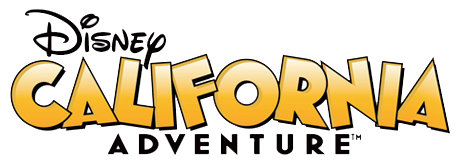
In 2007, Disney executives did something they'd never done before: they admitted defeat. Waving the white flag, Disney CEO Bob Iger announced that Disney California Adventure would soon undergo an unprecedented and unbeleivable transformation. The $600 million park would recieve $1.2 billion in redevelopment. Sure, in effectively tripling the park's investment, it would recieve new rides and shows and attractions. But more importantly, it would recieve a new foundation.
Bob Iger spoke to The Wall Street Journal in 2010: "Steve Jobs is fond of talking about brand deposits and brand withdrawals. Any time you do something mediocre with your brand, that's a withdrawal. California Adventure was a brand withdrawal."
Over the next five years, Disney California Adventure would undergo a metamorphosis, beginning with an identity change – a new logo (above) reflecting a fresh name (via the loss of the possessive "Disney's" in favor of the simpler "Disney," preferred by the company in modern times). The new logo was playful, but simple; cartoonish, yet classic... a hint of what was to come.
Image: Disney
A massive reconstruction effort transformed the park between 2007 and 2012, systematically dismantling the park's themed lands to the figurative (and in places, literal) studs, rebuilding each of the park's districts into reverent, historic, idealized, romanticized lands – the same conceptual framework as Disneyland Park's. For five years, California Adventure was a park of construction walls, with narrow paths from ride-to-ride. The short-term struggle was for a long-term gain.
"To all who come to this place of dreams: welcome. Disney California Adventure celebrates the spirit of optimism and the promise of endless opportunities, ignited by the imagination of daring dreamers such as Walt Disney and those like him who forever changed – and were forever changed by – The Golden State. This unique place embraces the richness and diversity of California... Its land, its people, its stories and, above all, the dreamers it continues to inspire."
Those are the words spoken by Bob Iger upon the celebrated Grand Re-Opening of Disney California Adventure. After a single, symbolic day closed to the public, California Adventure's rebirth was complete, and when the second gate at Disneyland re-opened to the public on the morning of June 15, 2012, it was quite literally transformed.
Welcome to the new Disney California Adventure – June 15, 2012. Let's take a walk through the spectacular theme park reborn of the ashes, and let's see if this new, one-day-old park has become a fitting complement to Disneyland.
Buena Vista Street
Image: HarshLight, Flickr (license)
Our first indication that things have changed is a grand one. The well-known "postcard" style entrance to the old California Adventure has vanished, taking with it each layer that made up that "postcard" view: the 11-foot tall letters spelling out C-A-L-I-F-O-R-N-I-A, the encompassing ceramic tile murals of California's manmade and natural wonders, the stretched-and-skewed Golden Gate Bridge, and even the bronze and brass Sun Icon appearing to rise behind them all.
Now, the park's entrance is marked by the soaring, streamlined teal towers of the Pan-Pacific Auditorium – the long-lost Los Angeles landmark that also serves as the entrance to Disney's Hollywood Studios in Florida. These iconic towers aren't just a fitting entrance for this Californian park; they're a classic counterbalance to the historic Main Street Train Station they stand opposite, and evidence that the new park may finally be a complement to Disneyland.
Beyond is another complement to Walt's park. While Disneyland features Main Street, U.S.A. (a turn-of-the-century Midwest town, idealized and perfected as if from the eyes of a child), California Adventure now features a Californian equivalent: Buena Vista Street.
Click and expand for a larger and more detailed view. Image: Disney
This is Los Angeles in the 1920s and '30s – a bustling young metropolis of sunset-hued buildings, art deco accents, kinetic energy, elegant department stores, big band music, and the electric optimism of the age. It's no coincidence that this is the Los Angeles Walt himself would've stepped into when he got off the train in 1923... in fact, by walking down Main Street to Buena Vista Street, we're living Walt Disney's California Adventure!
The Pacific Electric Red Car Trolley dings its way down the avenue, passing Oswald's gas station (a celebration of the long-forgotten cartoon Walt invented before Mickey), the Elias and Company Department Store (modeled after the grand, elegant department stores of the era), Julias Katz and Sons artistic supplies shop, and the Fiddler, Fifer, and Practical Cafe (named for Disney's Three Little Pigs, but overlaid with an in-universe story of a trio of sisters who sing and dance throughout Los Angeles and Hollywood).
Image: Disney
At the end of the street, the Sun Icon is long gone. In its place stands the gorgeous, stunning Carthay Circle Theatre. Of tremendous importance to California history, Walt’s story, and the movie industry, Los Angeles’ iconic Carthay Circle Theatre is where Walt risked it all to premier the world’s first full-length animated feature film: Snow White and the Seven Dwarfs. Not only is the glowing recreation of this old Los Angeles movie palace a stunning piece of architecture... it's also a worthy counterpart to Sleeping Beauty Castle – a deserving icon of the reborn park.
It's fitting that while Disneyland features the iconic Partners statue of Walt and Mickey surveying their life's work, California Adventure instead features a Californian equivalent: a sculpture of a young Walt and an early, pie-eyed Mickey, newly arrived in California with luggage in hand, gazing up at the Carthay Circle Theatre. The statue's name?
Image: Disney
Storytellers.
And now, the Red Car Trolley glides around Carthay Circle and between two oriental pillars to enter the park's next reborn land... Ready to hop aboard for a full-circle tour of the new California Adventure? Hold on tight, because while our look at its "new" lands continues on the next page, the lands that Disney Imagineers crafted during the park's redesign just a few years ago are already on the move once more... some say, toward another derail...
Enjoy it while you can as we tour through the reborn park and then catch up on what's happened since... Is Disney about to make its costliest mistake all over again? Read on...
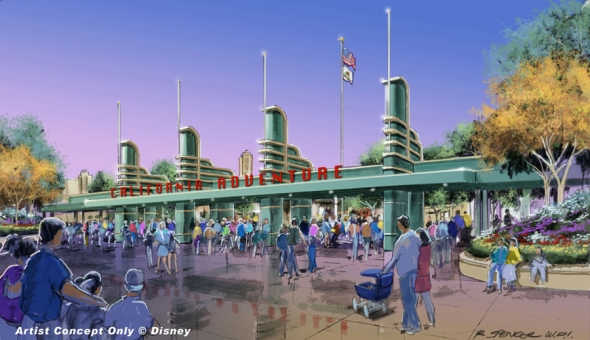
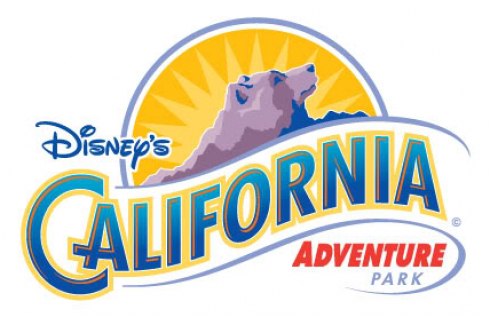
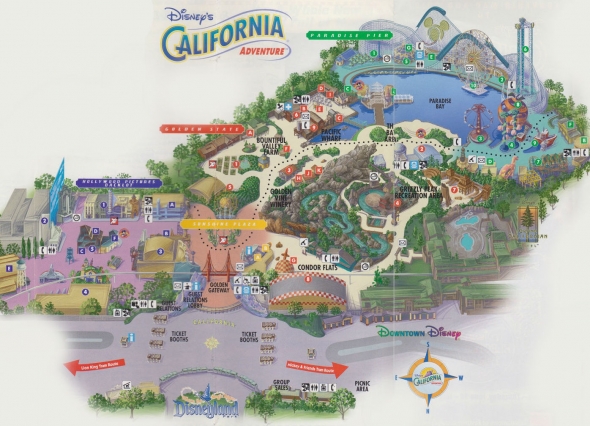
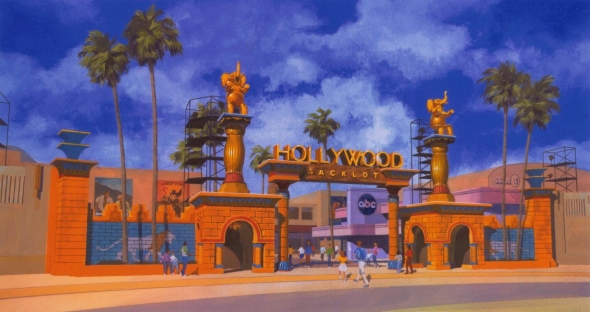
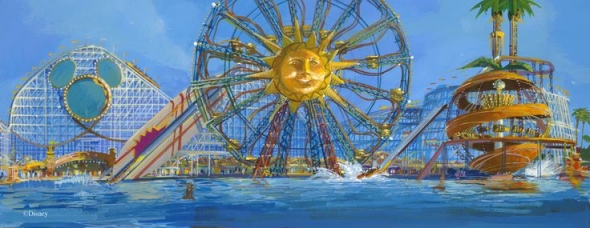
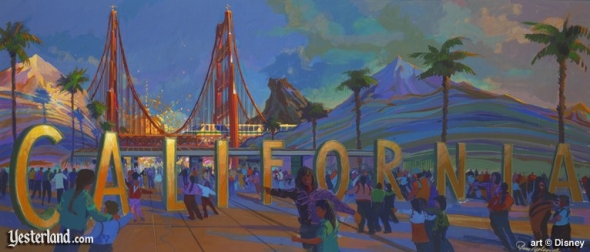
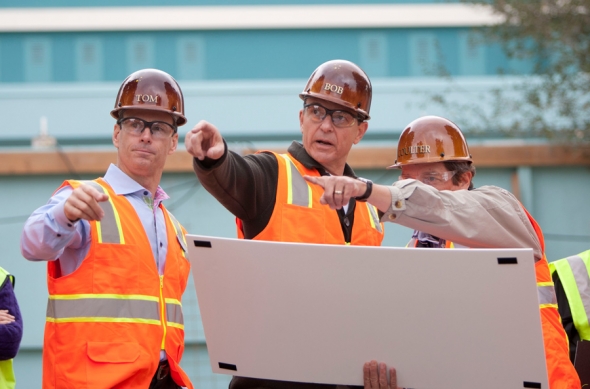
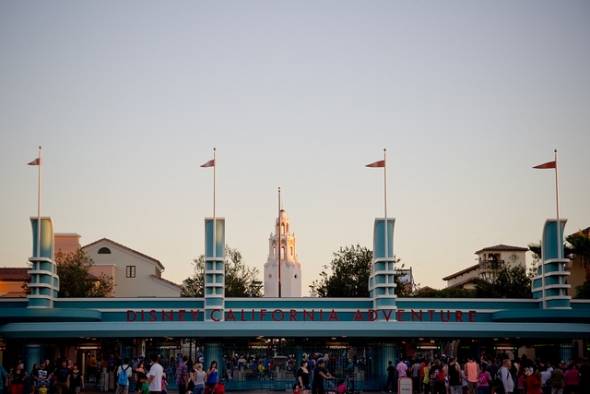
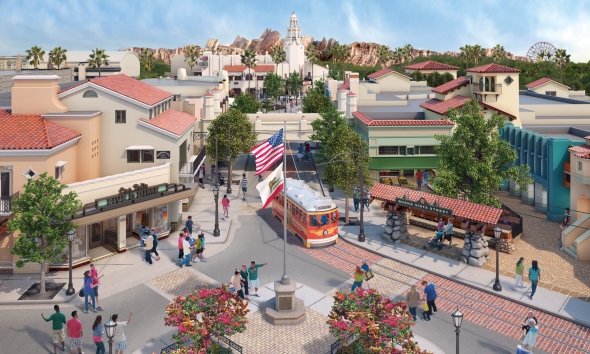
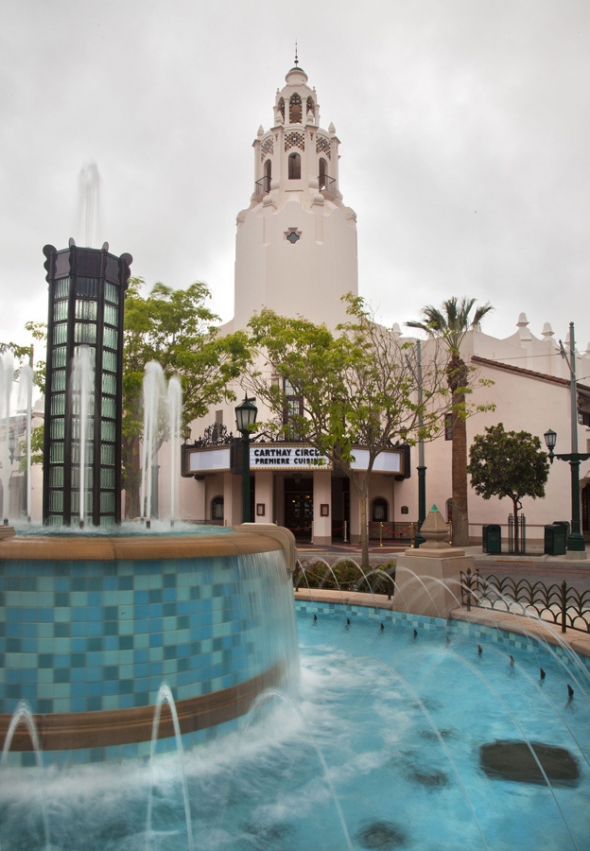
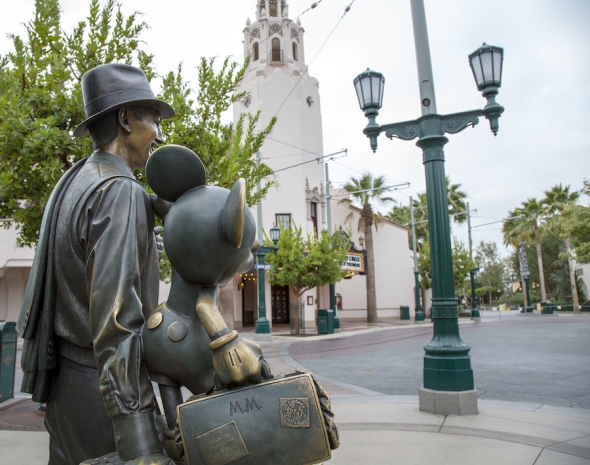

Comments
Disneyland is no longer the Disneyland Walt envisioned. Not one Disney family member is involved with the company any longer. Disney is run by bean counters who have no creativity or vision. They are turning Disneyland into a Universal Studios. Star Wars Land and Marvel land are cash grabs in order to recoup the money they lost on California Adventure early on.
I loved this article! I was a big early champion for California Adventure. The opening of Tower resonated so greatly with me, and showed a ton of promise for what a park themed around California in California could do. When DCA 2.0 was announced, I watched in fevered anticipation as a new story grew from the shell of DCA's admittedly cheap base. I was even so privileged to work on Buena Vista Street in it's first year of operation.
I was immensely devastated when Tower was announced to be closing. Your other article, Lost Legends, covered so much of my feelings about its closure, and this one also retouched on it. Tower's disrespectful slow removal while in operation and what replaced it so removed the anchor to California Adventure, the attraction that I saw as the prime inspiration for the 2.0 remake.
When Pixar Pier was announced, the punny names of stores and the irreverence completely turned me off from DCA. I refused to renew my annual pass when Tower closed, and the sharp reversal to DCA 1.0's mentality with a slightly higher budget just soured my love for the park. I can't find myself going back to California Adventure anymore because of the blatant face slapping of hip and modern IPs with short shelf lives. I find myself missing the original DCA 1.0, if not for the promise of the DCA to come years later.
The disappointment of the continued changes though, seems as if Disney has lost the true zeal of what makes their parks great. The art of it feels lost in the push for more crowds in an already crowded resort all with the promise of making good on what Universal Studios already does. I miss the Disney experiences, and I find myself dreading more theme park meta jokes. Rocket's Disneyland call out and the tongue in cheek tease of Incredicoaster just breaks the immersive quality of Disney Parks. I keep wondering when the irreverence will catch up with Disney, and I see glimpses of it (such as in the abrupt rehiring of James Gunn for Guardians right as a Twilight Zone reboot is about to be released) speaks to the shakiness and uncertainty of the push for now and in the moment when those now moments will be gone tomorrow.
California Adventure seems to be more like the West Coast version of Hollywood Studios in Florida or Disney Studios park in Paris... maybe it could use a change of name to reflect that.
In the 5th page, you said D23 Japan was held in November 2017. But it was held in February 2018. It might be a little difference though.
This makes me think of the entire "Chester and Hestor" debacle at Disney's Animal Kingdom.
Yes, it has an immersive and creative story.
Yes, the story itself is well executed.
But at the days end the story embraces and is a running riff on EXACTLY the type of roadside distractions Walt wanted to avoid by moving to Florida where he could have the "blessings of size."